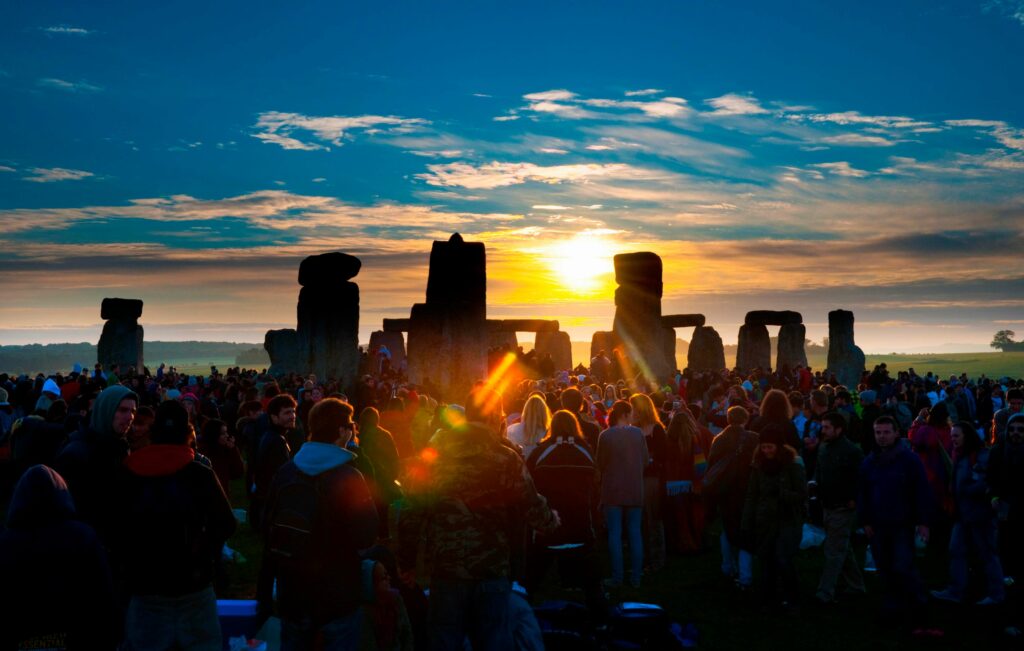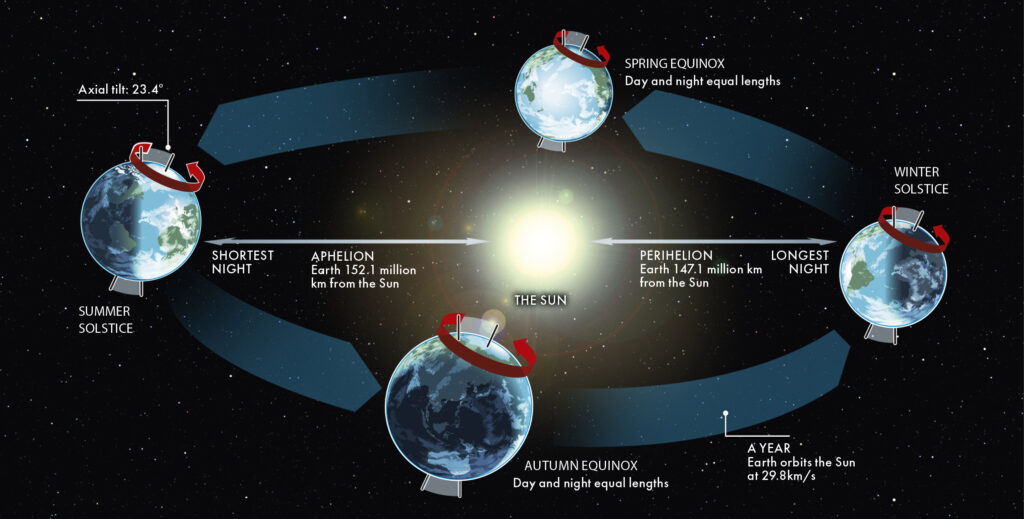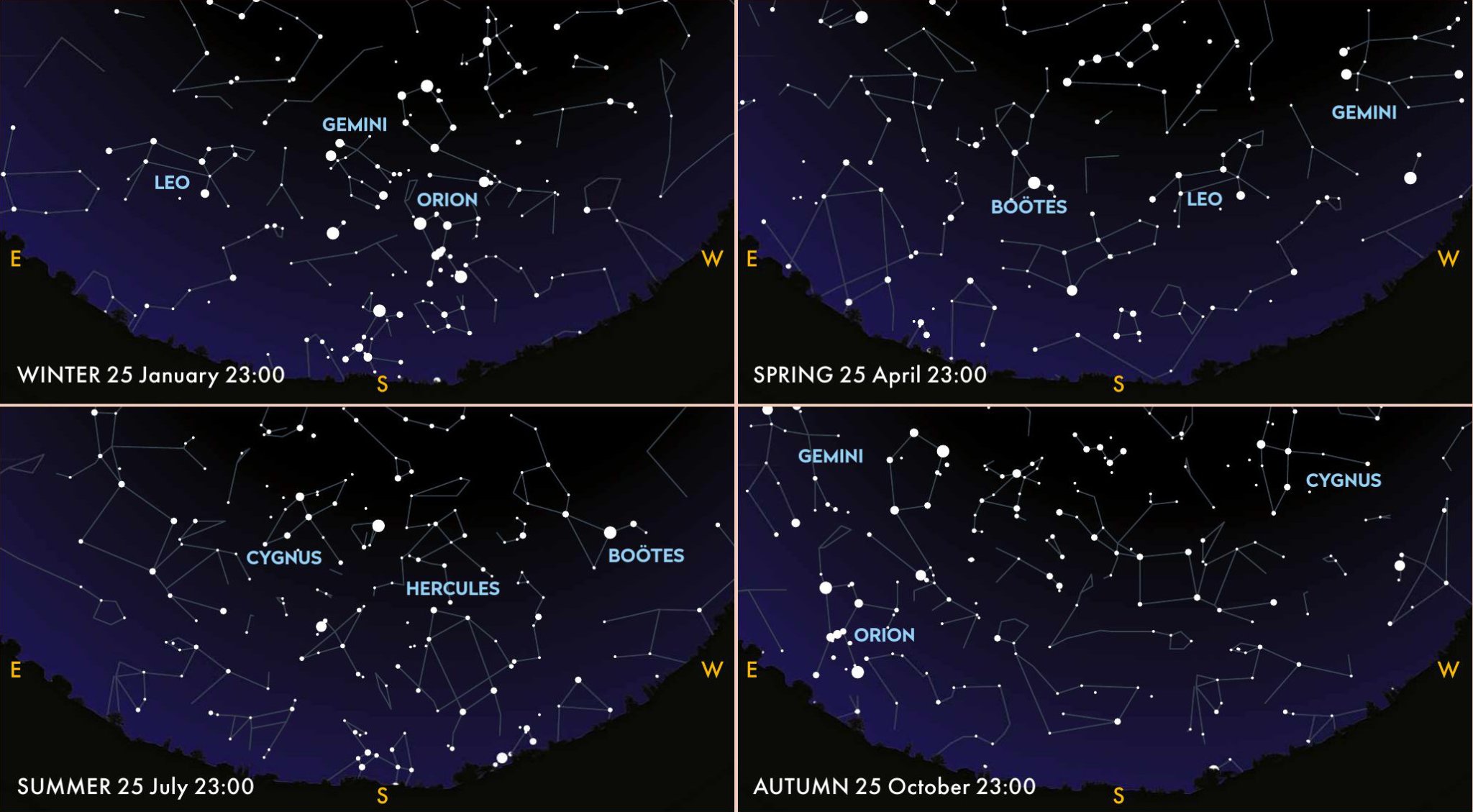The fundamentals of astronomy for beginners
EXPLAINER
Solstices and equinoxes
Katrin Raynor explains how we get our seasons from Earth’s orbit around the Sun

For thousands of years, our ancient ancestors tracked the path of the Sun across the sky, watching it rise and set at different positions throughout the year and constructing monuments such as the prehistoric stone circle Stonehenge in Wiltshire to keep track of its movement. June is a key month in the Sun’s path and also at Stonehenge, where thousands visit to mark the summer solstice – the longest day and shortest night of the year in the Northern Hemisphere.
The word ‘solstice’ comes to us from Latin, ‘sol’ meaning Sun and ‘sistere’ to stand still. But why does the Sun appear to stand still? And what does it signify in the astronomical calendar? Join me on a short journey as we follow Earth’s orbit of our nearest star and learn why we experience seasons and variations in sunlight throughout the year.
We know that the changing position of the Sun in the sky is down to various factors involving the movement and position of our own planet over the year. Earth is 150 million kilometres from the Sun and orbits it along a slightly elliptical path at a speed of 107,208 kilometres per hour. One orbit takes approximately 365 days. Our planet isn’t upright in its orbit; it’s tilted at an angle of 23.4° and spins on an axis (an imaginary line that passes through the North Pole to the South Pole) at a speed of 1,670 kilometres per hour. One spin takes 24 hours. The tilt, rotation and elliptical orbit of Earth all give rise to changes in the amount of sunlight that we receive in each hemisphere throughout the year, and this is why we have seasons. When the top of Earth is tilted towards the Sun, the Northern Hemisphere experiences summer, while the Southern Hemisphere faces away and people there have their winter. Six months later and the seasons flip in each hemisphere.
Our seasons in the astronomical calendar are determined by two solstices and two equinoxes a year. A solstice occurs at the two points in Earth’s orbit when our globe is at its maximum tilt either towards or away from the Sun. Equinoxes happen at the two points of the orbit when the Sun appears directly over the equator. The solstices and equinoxes divide the year into four parts: spring, summer, autumn and winter.

Built to tilt
The summer solstice occurs when that hemisphere’s pole is tilted at its maximum angle towards the Sun. During this time, we experience a day with the longest period of daylight, 16 or so hours in the UK. This year, the summer solstice in the Northern Hemisphere falls on 21 June; on this day at 3:57pm BST the Sun will reach the most northerly point along its path through the sky (the ecliptic) before moving south again. This is what is meant by the Sun ‘standing still’. The winter solstice is the opposite and occurs in December, when the North Pole is tilted at its maximum angle away from the Sun and the Sun reaches its most southerly point in the sky.
You might think that because Earth is tilted towards the Sun during the summer solstice, that that’s when we are closest to our star. But this is not the case. In fact, the point at which our planet is closest to the Sun (perihelion) is in early January. On 21 June, Earth is actually nearing the point at which it is furthest away from the Sun (aphelion), in early July.
Falling between the summer and winter solstices are the spring and autumn equinoxes. ‘Equinox’ again comes from Latin and translates as ‘equal night’. The equinoxes happen when Earth’s axis points neither towards nor away from the Sun, a point when the Sun crosses the celestial equator going northwards or southwards depending on the time of year. The Sun is above the horizon for the same amount of time as it is below it. This year’s spring equinox was on 20 March; the autumn equinox will be on 23 September.
World in motion
Stars in the night sky are always changing – but it’s us moving, not them

When you look to the night sky over the course of a year, you’ll notice that it changes. Constellations not only shift their position from night to night, but come and go as the seasons change. Each season has its own sky, with its own prominent constellations – which is why Orion, for example, dominates the winter sky but is absent in summer. These changes are entirely due to the motion of Earth and are nothing to do with the stars far out in space. Earth is moving around the Sun by approximately one degree a day and at the same time is completing one rotation every 23 hours and 56 minutes.
This is why we see the constellations shift westwards by one degree each night and rise in the east four minutes earlier. What this essentially means is that as Earth goes around the Sun spinning like a top, our view changes as we look out at different parts of the Universe at different times of the year.

Katrin Raynor is an astronomy writer and a fellow of the Royal Astronomical Society